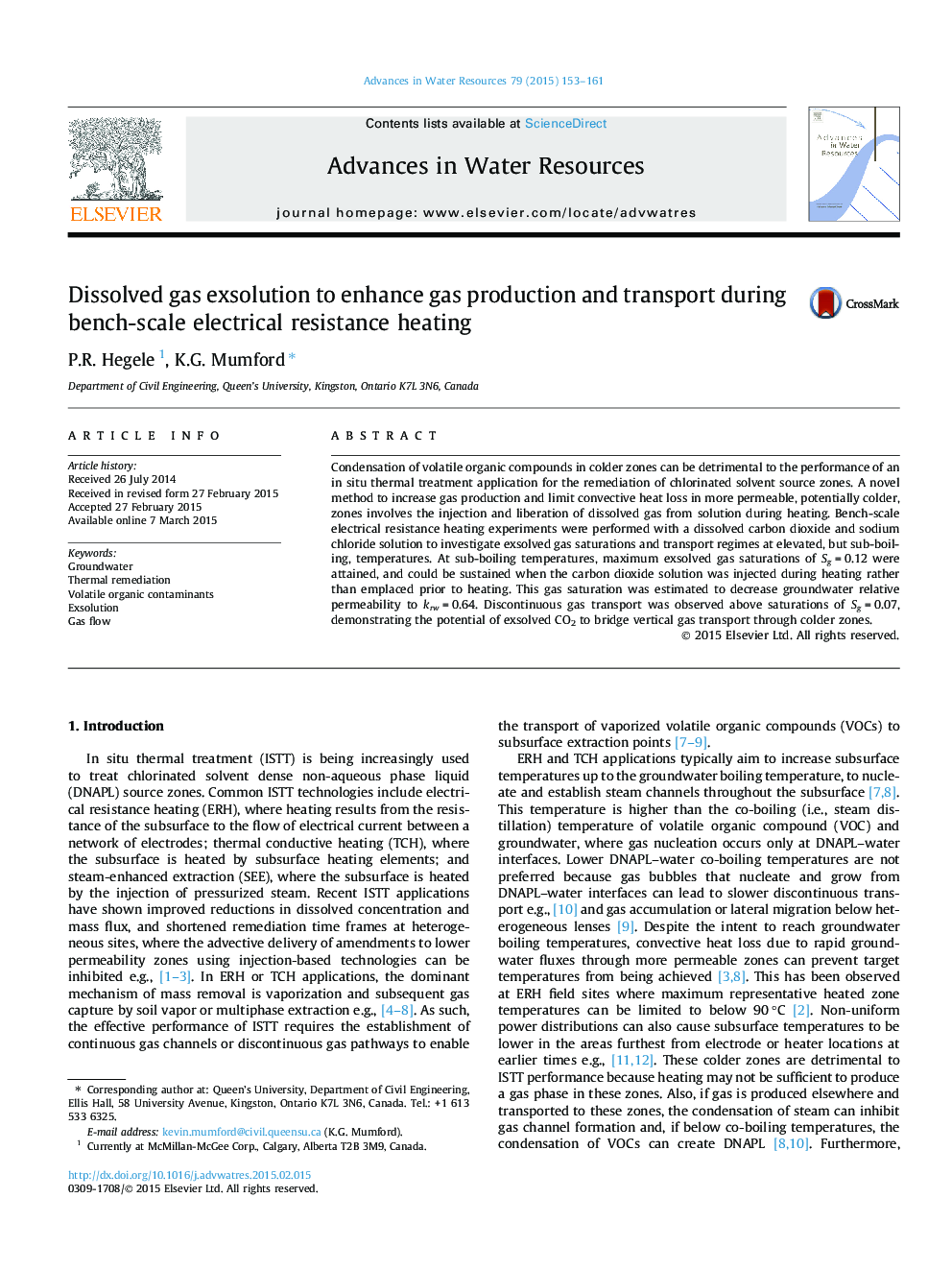| Article ID | Journal | Published Year | Pages | File Type |
|---|---|---|---|---|
| 4525441 | Advances in Water Resources | 2015 | 9 Pages |
•Laboratory experiments of electrical resistance heating for groundwater remediation.•Dissolved carbon dioxide solutions used to facilitate gas production during heating.•Exsolution of carbon dioxide produced discontinuous gas flow at lower temperatures.•Gas flow could be sustained by continuous injection of carbon dioxide solution.•Gas volumes likely sufficient for transport and aqueous permeability reduction.
Condensation of volatile organic compounds in colder zones can be detrimental to the performance of an in situ thermal treatment application for the remediation of chlorinated solvent source zones. A novel method to increase gas production and limit convective heat loss in more permeable, potentially colder, zones involves the injection and liberation of dissolved gas from solution during heating. Bench-scale electrical resistance heating experiments were performed with a dissolved carbon dioxide and sodium chloride solution to investigate exsolved gas saturations and transport regimes at elevated, but sub-boiling, temperatures. At sub-boiling temperatures, maximum exsolved gas saturations of SgSg = 0.12 were attained, and could be sustained when the carbon dioxide solution was injected during heating rather than emplaced prior to heating. This gas saturation was estimated to decrease groundwater relative permeability to krwkrw = 0.64. Discontinuous gas transport was observed above saturations of SgSg = 0.07, demonstrating the potential of exsolved CO2 to bridge vertical gas transport through colder zones.
